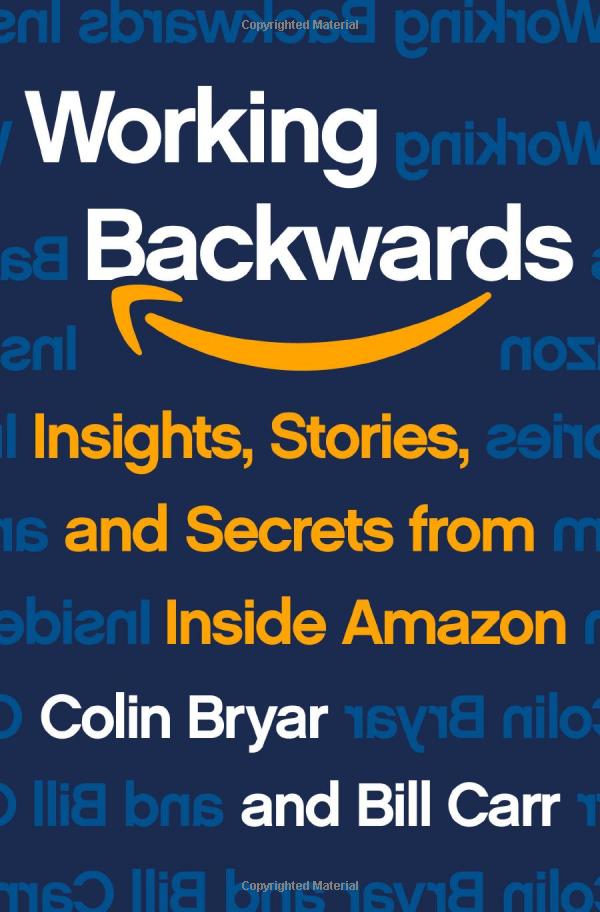Review of Working Backwards

Working Backwards by Colin Bryar and Bill Carr is an engaging book that reveals the secrets behind Amazon’s unique and highly successful business practices. The book introduces readers to the concept of “working backwards,” which puts the customer at the forefront of product development and creates a solution that meets their needs. This customer-centric approach has been key to Amazon’s success and is one of the foundational principles discussed in the book.
The book is divided into two parts. The first part lays the foundation for the application of Amazon’s practices in the second part. It covers Amazon’s unique philosophies (Leadership Principles) and how they are maintained through various mechanisms, such as the use of bar raisers in the hiring process. Bar raisers are experienced employees who are responsible for maintaining Amazon’s high hiring standards. They conduct a separate interview and provide a second opinion on whether the candidate is a good fit for the company. The idea is to increase the talent density at the company progressively by raising the hiring bar.
One of the most impactful concepts in the book is the idea of single threaded leadership, where a project has one person who is responsible for its success. This ensures that there is clear accountability and responsibility. By contrast, the concept of diffusion of responsibility and its impact on group behaviors is well acknowledged in psychology. The larger the responsible group, the less each individual feels responsible for the outcome. Single threaded leadership combats diffusion of responsibility by giving an individual the authority but also the responsibility to ensure success.
Another essential concept in the book is the use of six-page narratives to communicate complex information effectively. Amazon uses these to present quarterly and yearly business updates, and the meeting structure is altered to discuss the ideas and answer questions. Senior executives meet and spend the first 20 minutes in silence reviewing the document. The idea is grounded in the belief that the written word is a more effective mode of information transfer than charismatic speaking for a potentially bad idea. These narratives are also available for employees throughout the company, enabling Jeff to stay aligned on all major retail and marketplace programs and give feedback efficiently even as he devoted less time to those businesses.
Key to the “working backwards” concept is Amazon’s PR/FAQ process. Before any product development starts, the team writes a press release and FAQ document, as if the product is already complete. The purpose is to ensure that the team understands the product and its benefits from the customer’s perspective. This process has helped Amazon to develop products that resonate with customers and avoid building products that don’t meet their needs.
The book stresses the importance of tracking controllable input metrics, which measure the inputs into the business, rather than just the outputs. Amazon tracks metrics such as the number of customer reviews and the time it takes to resolve customer issues to identify areas for improvement and continuously refine their business practices.
In addition, the book covers Amazon’s approach to operations, which emphasizes automation and continuous improvement. By automating repetitive tasks and streamlining processes, Amazon is able to reduce costs and improve efficiency. Data-driven decision-making, experimentation, and iteration are also key to Amazon’s success.
Overall, Working Backwards is an insightful read for anyone looking to learn from Amazon’s innovative business practices. The book provides valuable insights into Amazon’s customer-centric approach, unique hiring process, and use of input metrics. I found the concept of PR/FAQs to be particularly impactful, as it forces teams to think through all aspects of the product and its impact on the customer. The book explores both successes and failures, with all foundational practices in the first part of the book being the solution of some failure or another. This perspective and thought process of pivoting after failure is what makes this book such a good read. I highly recommend this book to anyone looking to enhance their business strategy and stay ahead of the competition.
Rating: ⭐⭐⭐⭐⭐